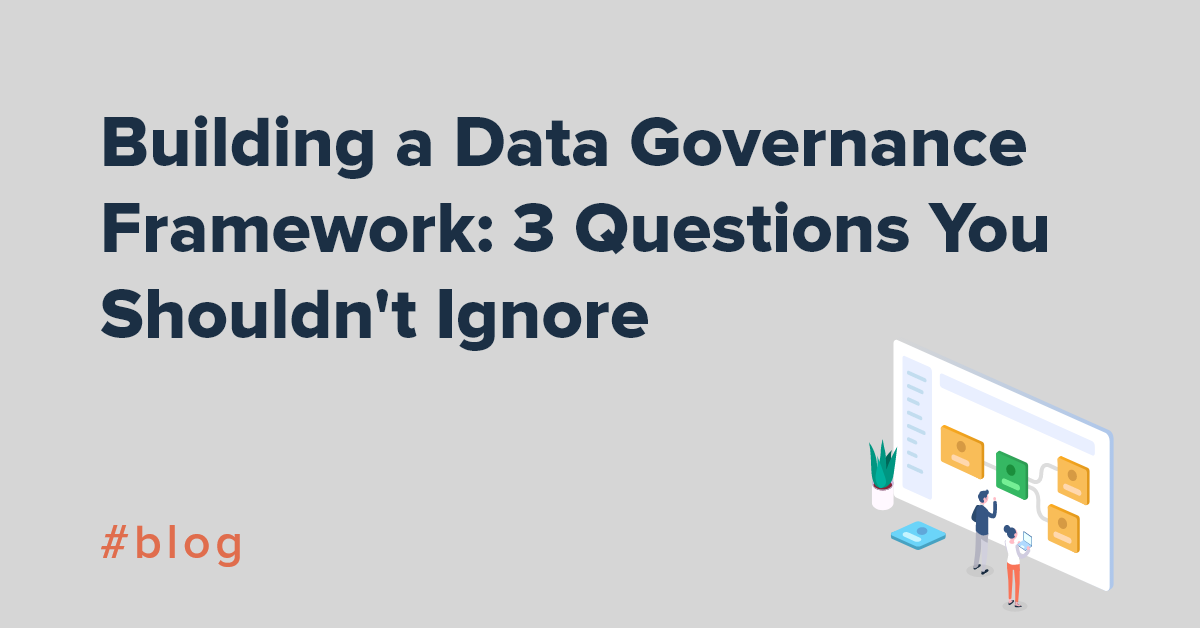Are you struggling to retain data transparency and stay in control of your data processes? If so, you probably need to revisit your data governance framework.
The first step, of course, is asking the right questions. Failing to do so leads to a framework that, at best, is inefficient and, at worst, leads to costly reconciliation processes and even costlier data breaches. A well-managed data-governance framework, on the other hand, will support your business and help it move towards its goals.
Before we look at improving a data governance framework, let's take a moment to define the term.
What is data governance framework?
Here's a definition of data governance framework:
A data governance framework is the procedures, rules and processes that align everyone in a business to use data in the same way. This process brings everyone in an organization on the same page with regards to how data is used. In short, a data governance framework defines who has authority and control over data assets and how these data assets may be used. It encompasses the people, processes, and technologies to manage and protect data assets.
Watch the video below and find out both what Data Governance is and how it will impact your business.
The next question is: what exactly should you be looking out for when building your framework? We’ve assembled the three most important questions you need to ask when building an effective data governance framework.
Question 1: How do we reduce the risk in our data governance framework?
The best data governance frameworks reduce risk because the downsides - such as legal penalties for regulatory non-compliance - are so high.
But to offer the best possible defense, your data governance framework must address the following:
- Apply identity access management (IAM), and use the principle of least privilege, so staff only have access to data they need to do their job.
- Ensure there’s a process in place if something is found to be noncompliant, so your team can react quickly and efficiently.
- Audit existing data and it’s lineage. Only with complete visibility into your infrastructure can you protect sensitive data.
Achieving zero risk with your data governance is impossible, but the steps above will help you eliminate most silos and black box processes.
Question 2: Who will oversee and review these processes?
Creating your data governance framework isn’t fire-and-forget – it's part of an ongoing data governance process.
And so, it’s important that the people who create the framework are also accountable for its continued delivery. Some organizations create a ‘Data Governance Council’ to cover this role.
But if your organization is smaller, these responsibilities usually fall on a senior member, such as your CTO, CDO or CIO. Data Stewards then sit below the council and ensure day-to-day data quality, and Data Protection Officers (DPOs) work to ensure you’re compliant with GDPR and other data regulations.
Without this accountability, it’s easy for standards to slip, staff members to pass the buck, and for your framework to become outdated over time. Assigning responsibility to the right people and scheduling meetings to review roles and performance is critical for ensuring your staff are doing what they can to ensure compliance. You simply can’t afford to assume that it’s being handled, or that staff will sort it out amongst themselves – there must be accountability.
Question 3: How can we use automation effectively?
Reduced errors, complexity and costs, all strengthen the technical and business case for automating the delivery of your data governance strategy.
Automation also creates repeatable building blocks for your data architecture. Because of this repeatability, you’ll enjoy greater transparency and a single version of the truth (SVOT). When you don’t have a SVOT or ‘golden record’, your datasets end up diverging. They then require a lengthy reconciliation process, which makes for a painstaking (and costly) audit.
By using automation effectively, you’ll improve your data modeling as well. This will empower you to accurately translate abstract business definitions into actionable run-time code. In turn, this reduces the time to value of your data projects and cuts development costs in the process.
In the video below you can see how CloverDX helped HSBC with data modeling. Specifically, we helped empower users so they can automatically translate models into ETL workflows.
Ask the right questions; deliver the right strategy
With regulatory and compliance fines in the banking sector reaching $26 billion last year, it’s critical to build an effective data governance framework. Reducing risk, assigning accountability, and making the most of automation are all key to developing a better governance strategy, creating the foundation for secure and modern IT operations.
But a data governance framework is only part of the puzzle.
You also need to think about how you put that framework into action. Data modelling dramatically improves the efficiency of your data reporting, data standardization and collaboration. But, while it’s a key accelerant for your data strategy, you still need a way to bridge the gap between those data models and your everyday IT operations.
To learn how you can accurately and easily translate business logic into executable code, check out our guide to making your data models more actionable. With this modern approach to controlling your data, you can handle regulatory requirements at scale and ensure full transparency throughout your organization.
(Editor's note: page updated as of June 2020)
By CloverDX
CloverDX is a comprehensive data integration platform that enables organizations to build robust, engineering-led, ETL pipelines, automate data workflows, and manage enterprise data operations.









